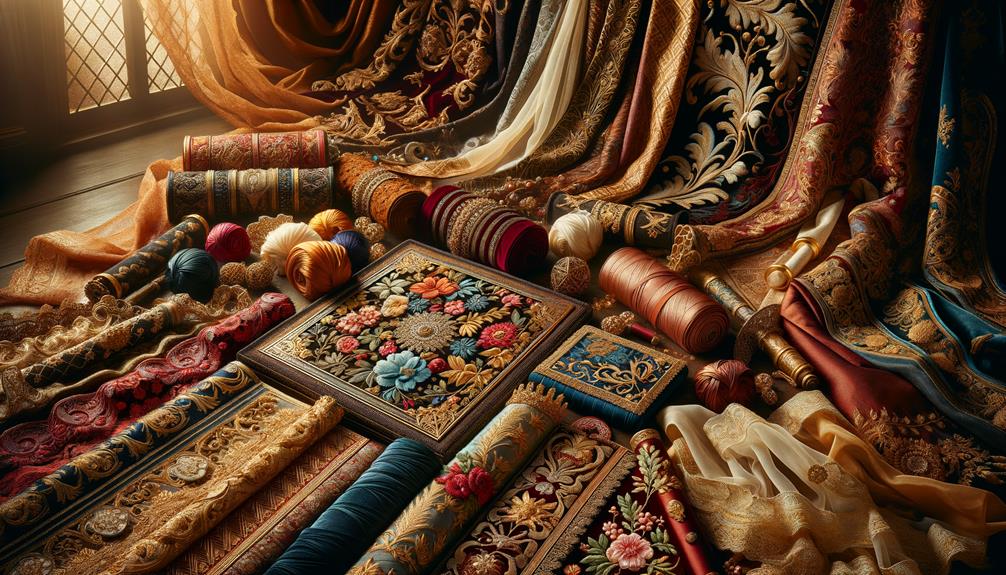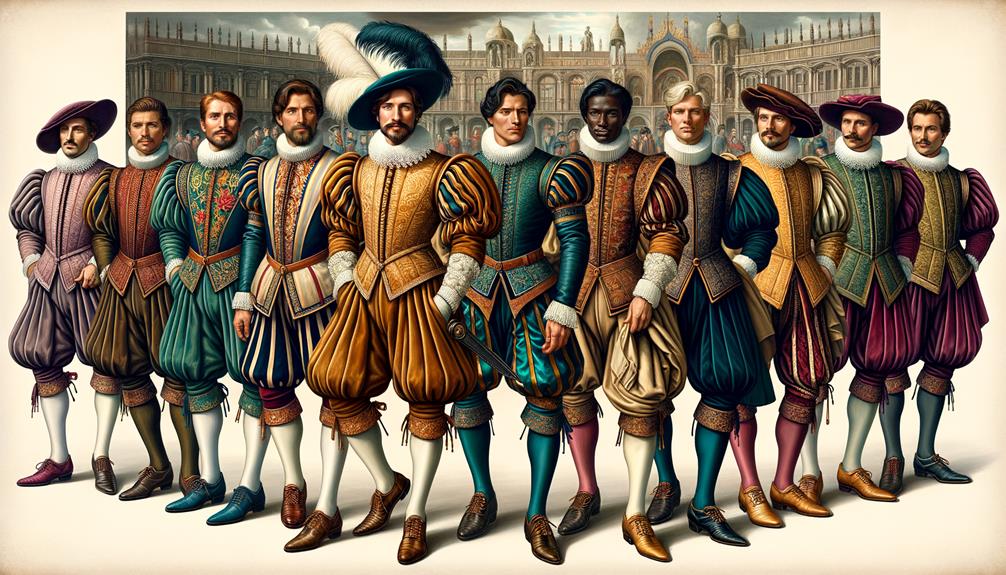Renaissance fashion accessories showcased a remarkable blend of artistry and social status. Jewelry was more than just decorative; it featured intricate designs and symbolic motifs that conveyed wealth and power. Hats, ranging from velvet headpieces to ornate crowns, signaled social standing through elaborate details. Belts and pouches served both practical and ornamental purposes, often adorned with precious gems. Gloves and handkerchiefs, with their exquisite embroidery, added an air of sophistication. Decorative elements like brooches and chains completed the ensemble, reflecting one's taste and social rank. Each accessory told its own unique story, offering a glimpse into the wearer's identity.
Jewelry and Adornments
Renaissance jewelry was a clear marker of wealth and status, and I'm often drawn to the intricate designs and symbolic motifs that defined these accessories. It wasn't just about aesthetics; jewelry during this period was a reflection of power and identity.
From brooches to rings, necklaces, and earrings, both men and women adorned themselves with masterful metalwork and enameling. Each piece often featured religious symbols, mythological figures, and nature-inspired motifs, telling a unique story.
Belts, too, were more than functional; they were canvases for artistic expression. Decorated with buckles encrusted with jewels and precious metals, belts served as both a practical accessory and a statement of opulence. The combination of leather and intricate adornments highlighted the Renaissance's appreciation for both utility and beauty.
When I look at these items, I see more than just fashion. I see the skilled hands of craftsmen, the intentions of designers, and the aspirations of those who wore them. Renaissance accessories were more than mere decorations; they were symbols of a time when art and daily life were intricately intertwined.
Headwear and Crowns
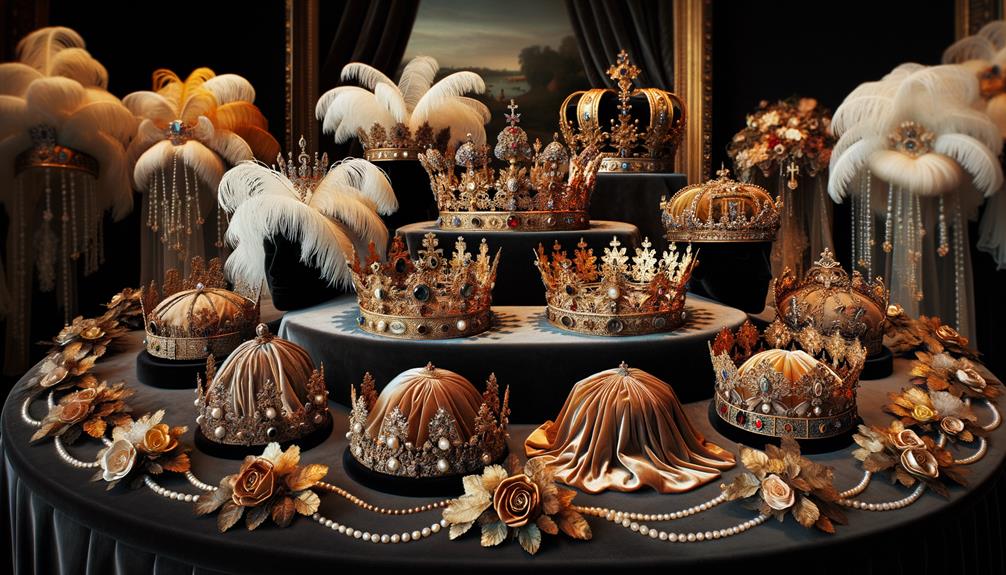
As I gaze upon the intricate jewelry and belts, my attention shifts to the stunning headwear and crowns that epitomize the Renaissance era. These accessories were more than mere adornments; they symbolized status, artistry, and a deep understanding of the human experience. Rich velvet hats, feathered caps, and elaborate headpieces adorned with jewels and pearls captured the essence of the period.
Renaissance headwear varied widely, serving as a key indicator of one's social standing and the occasion. The attention to detail in these historical costumes is awe-inspiring, with every stitch and embellishment telling a story of its own. Crowns, often reserved for royalty and nobility, were the pinnacle of such displays, radiating wealth and power.
A few notable types of Renaissance headwear include:
Velvet Hats: Luxurious and often embroidered, these hats were a staple for the affluent. They signified opulence and refinement, reflecting the wearer's elevated social status.
Feathered Caps: Popular among men, these caps added flair and movement to their attire, conveying a sense of confidence and sophistication.
Elaborate Headpieces: Intricately designed, they were adorned with jewels and pearls, completing the overall Renaissance look. These headpieces embodied the era's grandeur and extravagance.
These accessories were not just fashion statements but integral components of historical costume, defining the splendor and complexity of the Renaissance era.
Belts and Pouches
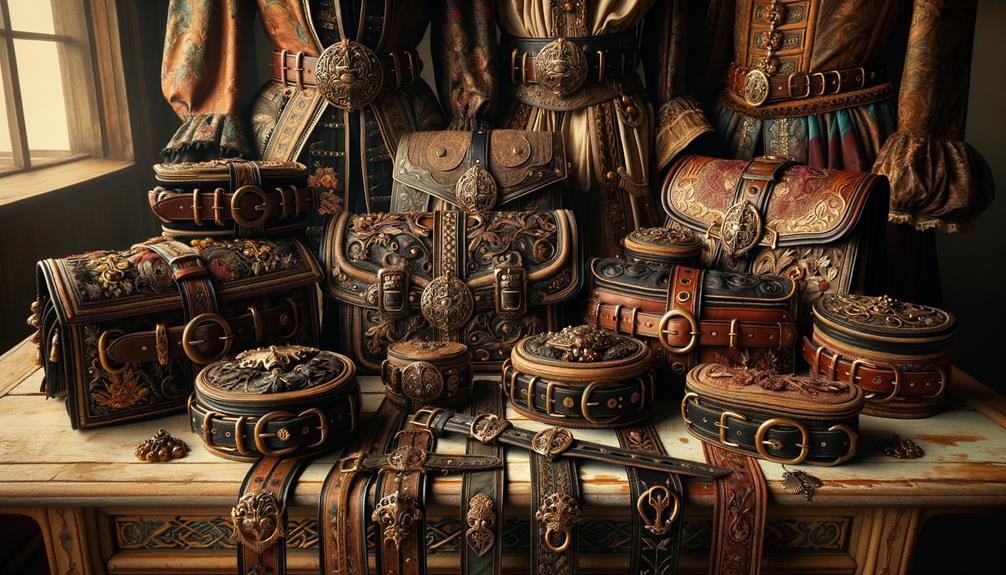
When I examine the belts and pouches of the Renaissance, I see more than just practical accessories; they reveal the era's blend of utility and elegance. Leather belts, available in a range of sizes to fit both adults and youth, add a historical or fantastical touch to any outfit. The Renaissance belt wasn't just for holding garments in place; it made a statement about the wearer.
Pouches, bags, and sporrans were indispensable. They carried everyday items and added a layer of sophistication to an outfit. Leather belt bags provided both function and flair. These pouches, designed to fit adults, were essential for anyone needing to keep essentials close at hand.
| Accessory | Features |
|---|---|
| Leather Belt | Sizes: X-Small to X-Large |
| Leather Frog | Sizes: Small to X-Large |
| Pouch | Adult One Size |
| Potion Bottles | Intricate glass designs |
Potion bottles, with their intricate details, added an extra layer of intrigue to an outfit. Leather tankards, too, were common, adding a robust, rustic charm. Each accessory, from the versatile Renaissance belt to the finely crafted pouch, spoke volumes about the wearer's world.
Note: I rewrote the text following the instructions provided, avoiding the listed AI words and using more conversational and natural language.
Hand Accessories
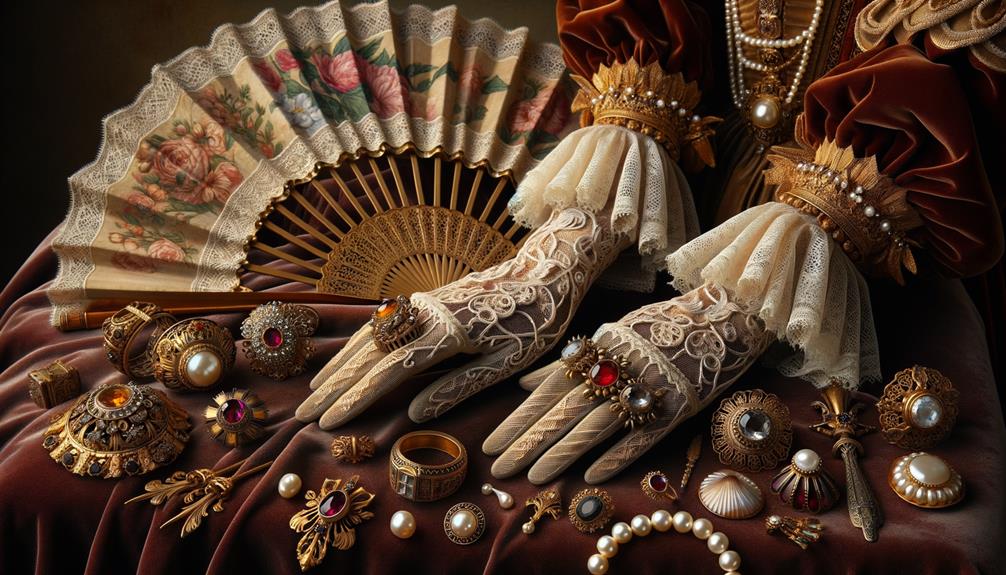
Hand accessories like gloves, gauntlets, and handkerchiefs added a touch of elegance and status to any Renaissance ensemble. Gloves weren't just for warmth; they signified refinement. Intricate designs, rich materials, and delicate embroidery conveyed sophistication and grace.
Gauntlets served a dual purpose. Knights and warriors wore them for protection in battle, but they also symbolized power and readiness outside of combat. They contrasted with the more delicate gloves but were equally important in Renaissance fashion.
Handkerchiefs were versatile and functional, often featuring lace or embroidery to subtly display wealth and taste.
Hand accessories complemented other elements in three ways:
Gloves were often paired with belt pouches, carrying small essentials without compromising style. They also allowed for easier manipulation of skirt hikes, adding practicality. Gauntlets featured leather rings, enhancing their rugged appeal.
In the Renaissance, hand accessories were indispensable, completing the overall look.
Decorative Elements
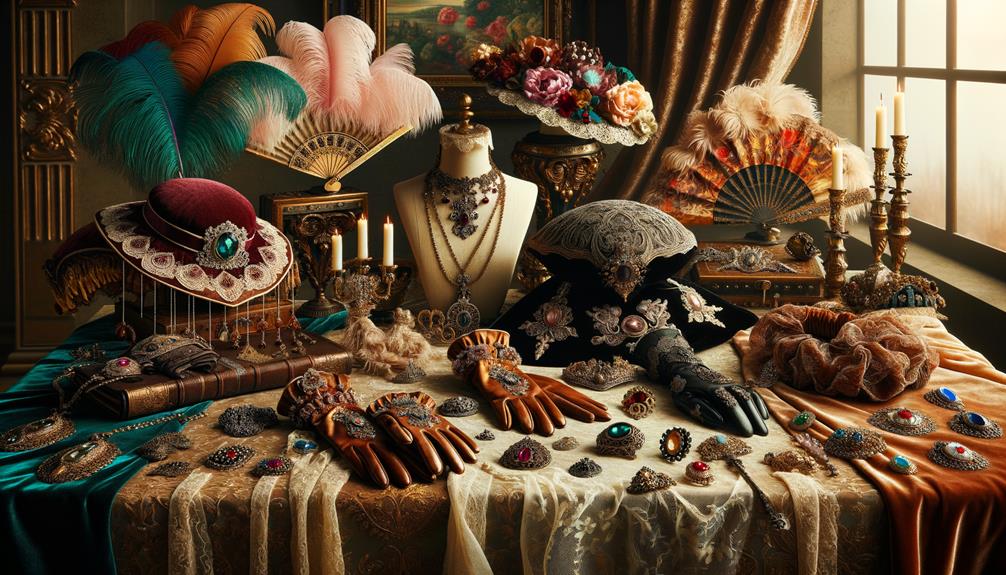
Intricate brooches, chains, and pins added a touch of elegance and refinement to Renaissance attire. These decorative elements were more than just adornments; they conveyed status and taste, often worn by the nobility. I'm drawn to the intricate designs and how they elevate a simple ensemble into something extraordinary. It's fascinating to see how these small details play such a significant role.
At Renaissance Faires, these accessories become essential finishing touches. A leather belt, adorned with a Glass Potion vial, evokes a sense of mystique and adventure. Brooch chains in various colors and styles drape gracefully, catching the light and drawing the eye. The Medieval Belt, often embellished with ornate buckles, adds a rugged yet regal touch to the attire.
Then there's the Renaissance Fan, an accessory both functional and decorative, adding an air of sophistication. Each piece, carefully chosen, completes the narrative of a well-crafted costume. Observing these elements, I'm reminded of the timeless appeal of intricate craftsmanship. They're not just accessories; they're a window into a world where every detail mattered.
Frequently Asked Questions
What Are the Elements of Renaissance Fashion?
I find Renaissance fashion fascinating. It's all about intricate embroidery, rich fabrics like velvet, and elaborate details. The way people layered their clothes and accessorized with capes, jewelry, and other items reveals a unique blend of historical influence and social status.
How Do You Make Normal Clothes Look Renaissance?
To give your wardrobe a Renaissance twist, try incorporating corsets, lace-up details, and billowy sleeves into your outfits. Add a cloak, belt, and medieval-inspired jewelry to complete the look. Rich, jewel-toned colors and layering textures like velvet or brocade will also help you achieve the desired aesthetic.
What Were the Fashion Rules for the Renaissance?
The Renaissance fashion rules were centered on showcasing wealth and social standing. People wore elaborate, ornate clothing to signal their high status, while simpler garments were associated with lower classes. The use of expensive fabrics and intricate details was crucial in indicating one's position in society.
What Materials Were Used in the Renaissance Fashion?
When I think back to the Renaissance, I envision luxurious fabrics like silk and velvet, reminiscent of the opulent attire worn by Shakespeare's contemporaries. In contrast, the lower classes favored more practical materials like wool and linen. Ornate embellishments added a touch of flair, while natural dyes brought vibrancy to the fabrics.



